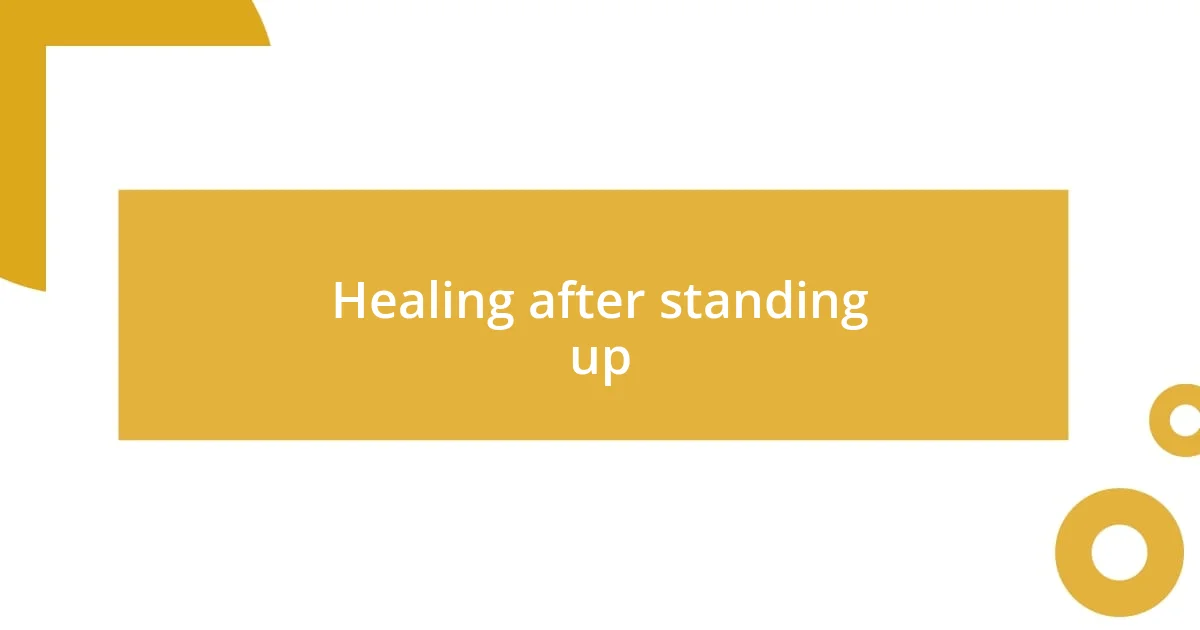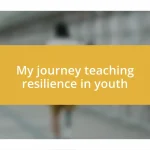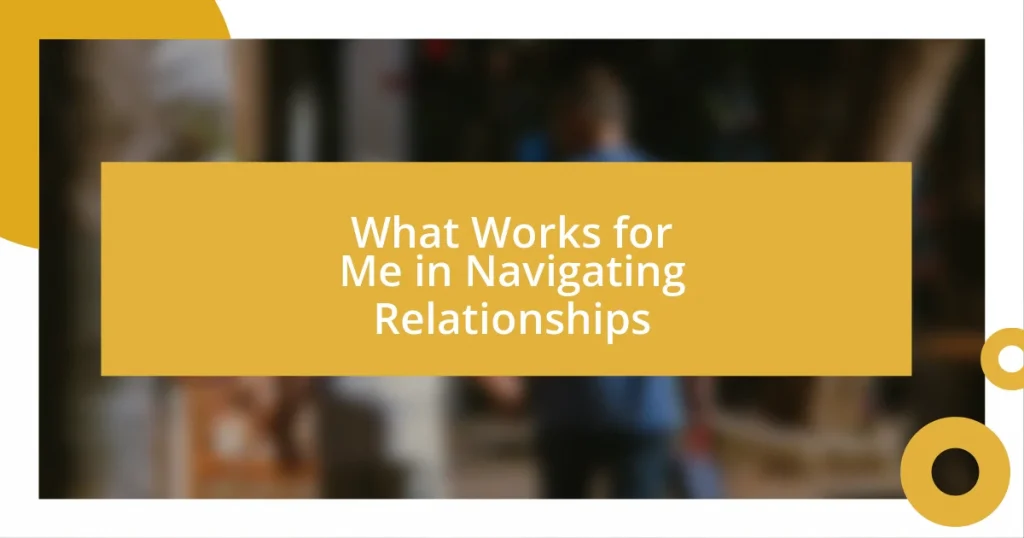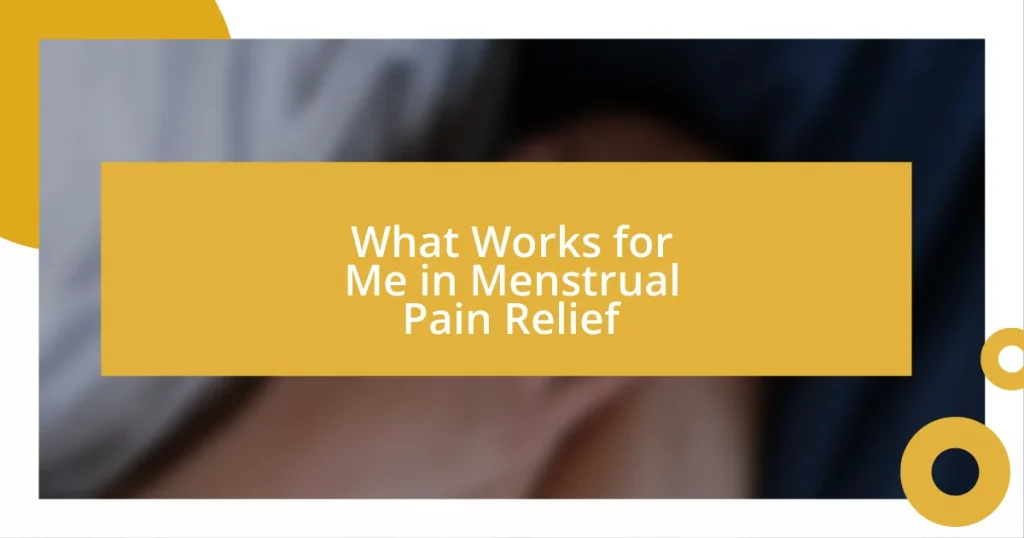Key takeaways:
- Recognizing the dynamics of abuse, including power and control, is crucial for victims to identify their reality and reclaim their strength.
- Building a support network, including friends, support groups, and professionals, significantly empowers individuals in their journey to heal and confront their abusers.
- Healing is a non-linear process that involves self-compassion, acknowledging pain, and celebrating small victories while moving forward in life and rediscovering oneself.

Understanding abuse dynamics
Abuse dynamics can often be baffling, as the abuser’s behavior may swing between affection and aggression, creating a confusing emotional landscape. I remember once feeling elated after a kind gesture, only to be met with harsh words a day later. How can love coexist so closely with pain, I wondered? This cycle of manipulation can make it incredibly difficult to identify what is happening, often leaving victims questioning their reality.
One crucial aspect of these dynamics is the role of power and control. An abuser may use tactics that gradually erode a person’s self-esteem and independence. I’ve seen this firsthand—the way small, seemingly harmless comments can chip away at a person’s confidence until they feel completely powerless. Have you ever felt so small because of someone else’s words? It’s a heartbreaking yet common experience, leaving many feeling trapped and unsure of how to escape.
Understanding that the abuser often operates from a place of insecurity can be instrumental in breaking free from these cycles. The need to dominate and belittle stems from their own fear or inadequacy, and recognizing this helped me find my strength. It’s a painful realization, yet it opens the door to healing. If you’ve ever felt like your worth was stripped away, remember that your value is inherent—it can never be taken from you.

Recognizing the signs of abuse
Recognizing the signs of abuse can be a subtle, yet crucial step toward reclaiming power. Often, it begins with a feeling; perhaps you notice a constant sense of unease after interactions with someone. I recall times when I would catch myself doubting my reality after certain exchanges, feeling as though I was walking on eggshells. Those initial feelings of discomfort shouldn’t be ignored; they can signify deeper issues.
Emotional manipulation can manifest through guilt and shaming tactics. My experience revealed this in the form of backhanded compliments that seemed harmless at first. It was like a rollercoaster of emotions, where moments of apparent goodwill would plummet into harsh criticisms. Have you ever felt your joy diminished by someone else’s words? This subtle yet pervasive erosion of self-worth is a red flag that signals abuse lurking beneath the surface.
In addition to verbal cues, physical signs shouldn’t be disregarded. I remember days when I’d wear long sleeves to hide marks I didn’t want to explain. Awareness of these signs is vital; they are expressions of control and dominance that can often go hand in hand with the emotional signs. Recognizing these markers empowers individuals to take the first step toward liberation from toxic dynamics.
| Signs of Abuse | Description |
|---|---|
| Isolation | Withholding from friends and family to gain control. |
| Verbal Abuse | Constant belittling and demeaning language that undermines confidence. |
| Physical Indicators | Unexplained injuries or changes in physical appearance that raise concern. |
| Emotional Manipulation | Using guilt or blame to twist situations in favor of the abuser. |
| Gaslighting | Making the victim doubt their own perceptions or memories. |

Finding the courage to confront
Finding the courage to confront an abuser is often a slow and daunting process. I remember a moment when I finally decided to face my abuser. It was terrifying, but I felt a surge of determination that ignited within me. That day, I understood that confronting my reality was crucial not just for me, but for others who might be trapped in similar situations. It’s important to realize that your voice matters, and harnessing that inner strength can lead to significant changes.
Summoning the courage comes from recognizing your worth and believing you deserve better. Here are some thoughts that helped me on my journey:
- Empower Yourself: Surround yourself with supportive friends or mentors who validate your feelings.
- Identify Your Triggers: Understanding what provokes fear or anxiety can help you prepare mentally for confrontation.
- Visualize the Outcome: I often pictured how life would feel after standing up. That image kept me motivated.
- Practice Assertiveness: Role-playing how you want to confront the abuser can build confidence.
- Keep a Journal: Writing about your feelings and experiences can clarify your thoughts and strengthen your resolve.
Each step may feel small but can create ripples of courage that lead to powerful moments of confrontation.

Building a support network
Building a support network can be a game changer in overcoming abuse. I vividly recall reaching out to a close friend, hesitating as I typed my message. It felt like lifting a weight off my chest when she responded with understanding and compassion. Surrounding myself with people who listened without judgment helped me feel seen and valued again.
It’s crucial to seek out those who not only support you but also empower you. I found solace in a local support group, where shared experiences forged bonds that felt unbreakable. Have you ever found strength in the collective voices of others? There’s something profoundly healing about connecting with individuals who truly grasp the nuances of your journey.
In addition to friends and support groups, consider professional help, such as therapists or counselors. When I first walked into therapy, I was skeptical, wondering if opening up would really make a difference. But with time, I realized that their guidance helped me navigate my emotions and build a clearer path forward. Investing in a supportive network, both personal and professional, is key in reclaiming your life and confidence.

Strategies for effective confrontation
Confronting an abuser effectively requires both clarity and strategy. I remember preparing for my confrontation with a long list of thoughts I wanted to express, almost like a script. It didn’t just help me stay focused, but it also reminded me of my purpose. Have you ever felt the power of having clear intentions? Knowing what you want to say can bolster your confidence significantly.
Another strategy that worked for me was to choose the right time and environment. I once confronted my abuser in a public place, thinking it might deter any aggressive behavior. While it was nerve-wracking, the presence of others gave me a sense of security. Reflecting on that experience, I realized that minimizing isolation during confrontation can pave the way for a safer emotional experience.
I also found that non-verbal communication plays a pivotal role. When I faced my abuser, I focused on my posture and eye contact, trying to project strength even when my heart raced. How often do we underestimate the impact of body language? It became clear to me that standing tall and maintaining eye contact sent a powerful message: I was not going to be silenced. These strategies, woven together, can create a robust defense against the haunting shadows of abuse.

Healing after standing up
Healing after standing up often feels like navigating a complex maze, one that involves both triumphs and setbacks. I remember the first time I allowed myself to truly grieve after confronting my abuser. It felt like a floodgate had opened; tears that had been held back for so long flowed freely. Can you relate to the emotional release that comes from acknowledging the pain? Allowing those feelings space was a vital step in my healing journey, even when it felt overwhelming.
As I moved forward, I discovered the importance of self-compassion. During moments of doubt, I often caught myself thinking, “Why didn’t I do this sooner?” But I’ve learned to counter those negative thoughts with affirmations of strength. Each time I reminded myself that I took a courageous step, I felt a bit lighter. It’s essential to celebrate even the smallest victories, don’t you think? These moments of self-kindness became my lifeline, fostering a sense of empowerment amid the healing process.
Moreover, I found that healing doesn’t always follow a linear path. Some days I felt energized and ready to take on the world; other days, I found myself retreating into solitude. Walking through this ebb and flow taught me patience. Have you ever noticed how restorative it can be to simply allow yourself the space to feel? Recognizing that healing fluctuates is a valuable insight, enabling me to navigate my journey with greater understanding and resilience.

Moving forward and reclaiming life
Moving forward after standing up to an abuser often feels like rediscovering parts of yourself that had been hidden for far too long. I remember the first time I stepped out into the world alone after my confrontation; everything felt vibrant and full of possibility. Can you picture the awkward yet exhilarating sensation of reclaiming spaces that once felt unsafe? Embracing life again required me to challenge old fears and reimagine my existence on my own terms.
As I began to rebuild my life, I found joy in small, everyday moments. I started taking solo walks in the park—something that used to feel daunting—just to soak up the sunshine and breathe deeply without fear. Each step forward was a reminder that I was reclaiming my narrative. Have you ever felt the power of those mundane yet profound experiences? I learned to celebrate these little victories, as they reinforced my commitment to living fully rather than merely surviving.
Creating new memories became crucial in my journey of reclaiming life. I began to explore new hobbies and interests that had been eclipsed during the abuse. One day, I signed up for a painting class, and it was liberating to express myself in vibrant colors. Have you tried diving into a creative outlet that sparked your spirit? For me, this act of creation transformed my healing; it was not just about moving on but truly moving forward with hope and excitement for the future.














